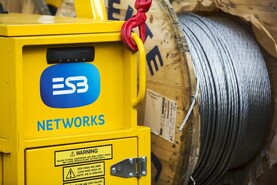A major overhaul and upgrade of the national electricity grid is planned by ESB Networks to deal with an expected 50% increase in demand, coupled with an increase in generators seeking to access the grid for export by 2040.
Micro-Renewable Energy Federation (MREF) chair Pat Smith said that this planned upgrade needs to happen at speed and scale, otherwise significant amounts of renewable energy, especially from micro-generators, will not be able to export surplus power to the grid, nor will their power be available to fuel the expected 1,000,000 EV cars and 700,000 e-heat homes by 2040.
Pat said: "Businesses and farms are already finding it hard to accept or understand the curtailment of micro-generation grid connections in certain parts of the country.
"[The] MREF has evidence of two business micro-generators in opposite parts of the country who applied for grid export of 100kW and were offered 11kW due to poor grid infrastructure."
Priority
Pat said that ESB Networks' strategy planning needs to give priority to areas of the country that are currently experiencing restricted grid capacity.
He said that key to ensuring that these grid upgrades happen at speed is effective communications with all stakeholders that clearly outlines the purpose and need for such grid upgrades.
Engagement
He called for an intensive national media campaign to communicate the urgency of these upgrades and the significant investment in the electricity distribution grid that is being undertaken.
He said there also needs to be early engagement with farmers, land and home owners directly affected by the planned network upgrade works.
“We cannot endure another decade-long fiasco of costly delays such as those experienced on the North-South Interconnector,” he said.
Infrastructure
Smith said that the ESB Network consultation document gave an excellent summation of the challenges ahead and he encouraged all stakeholders to take the time to read it.
“It is heartening to learn that there are over 2,300,000 poles and 175,000 pylons supporting 157,000km of overhead power lines across the country and most of this was built across lands with the support and goodwill of farm families,” he said.






 This is a subscriber-only article
This is a subscriber-only article











SHARING OPTIONS: